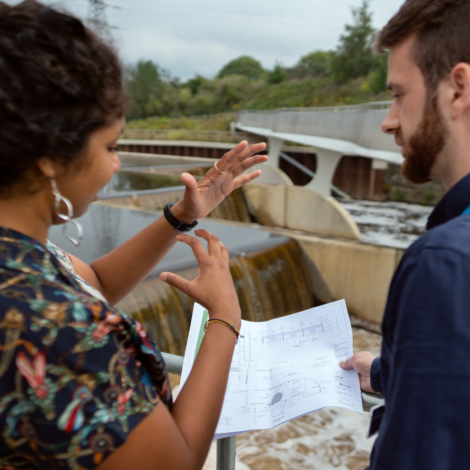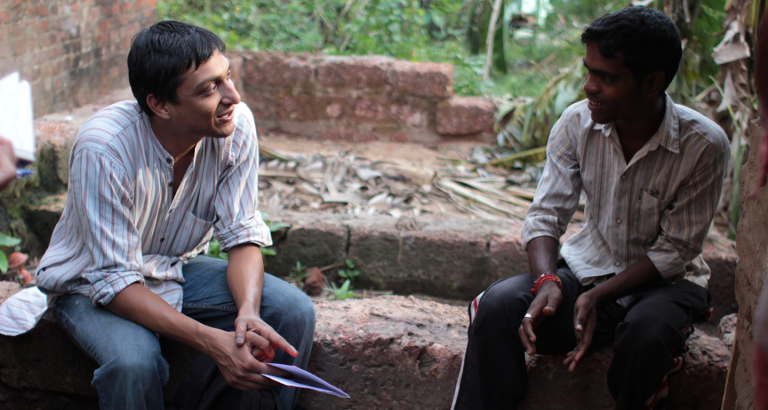Map, profile, model data and visualize findings in Step Two of the four-step Introduction to Engineering for Global Development.
Putting people at the center of the research that goes into a product design can nip a problem early before it brings down the entire project. Selco Labs in Ujire in Karnataka, India, saw this principle in action when they user-tested a new rice paddy thresher with farmers who were used to threshing by hand.
“We paid a lot of attention to performance, and we thought it would catch on really quickly. During field testing, though, users did hold back from a completely positive response because they were concerned about their hands catching in the rapidly rotating spokes and hurting themselves,” says Anand Narayan, an Intellectual property and Development consultant who worked on the thresher.
“In retrospect, we should have recessed some of the parts so that the machine would both be and appear safer to use,” Mr. Narayan says.
Research and engagement can help engineers avoid becoming too focused on the technology as a sole solution.
Mr. Narayan has infused the lessons he learned on that project and his entire career into E4C’s online educational program for novice practitioners of engineering for global development. The second module in the program provides tools to help identify the people you should talk to, how to learn from them and how to work with them to improve the quality of your design, and, in some cases, even to conclude that you don’t need to design anything new at all.
Merely understanding the premise of the Learn module could do much to prevent common mistakes in technology design for global development.
The focus is on stakeholders, the people who have a stake in the outcome of the project, whether it be a product, infrastructure, or other technology that is intended to help. The module shows practical ways to identify stakeholders and then to engage with them – that is, to learn from them and work with them to design the project.
The human interactions at the core of research in a community can hide unexpected pitfalls, but knowing what they might be can help prepare for them.
Research and engagement can help engineers avoid becoming too focused on the technology as a sole solution. And it can also reveal solutions that may already be available, helping engineers to avoid another common pitfall, reinventing the wheel.
Human-Centered Research
The human interactions at the core of research in a community can hide unexpected pitfalls, but knowing what they might be can help prepare for them. The module helps settle questions such as the appropriate size of a group of people who will be interviewed, whether or not to offer compensation in return for the time spent interviewing, awareness of the biases that the interviewees may hold and other considerations that touch on the ethics and the quality of information gained through research.
How to interview
One of the module’s strengths is its instruction in how to ask effective questions. The gist is to keep them short, neutral and assumption-free. There are examples of each (e.g. Ineffective: What do you cook with your cookstove? Effective: What do you use your cookstove for?)
How to organize
Good research will generate reams of written notes, recorded interviews, photos, maps and other data. The module also offers insight into how to organize it all, and how to share and analyze it.
This is a glimpse of what the module offers. It also lays out how to conduct a competitive analysis, identify possible pathways for implementing the project and more.
The course is available on demand, free of charge to E4C members. Please start here.


MECHANICAL engineering